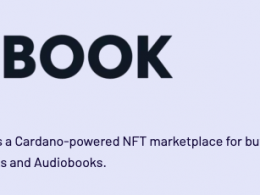There is a huge demand for non fungible token (NFT) platforms and marketplaces. At the time of writing this article, more than 400 thousand (NFT) have been minted on Cardano, and the number is growing by the hour.
What are NFTs?
NFTs, or non-fungible tokens, are a solution created to represent objects with unique, unrepeatable and indivisible qualities within a blockchain. Each NFT has its own identity.
Cardano differs from other blockchains in that NFTs can be created natively, without the need for smart contracts. These assets behave similarly to the ADA cryptocurrency, with the difference that NFTs can be created and destroyed. These two features allow anyone to mint NFTs on Cardano, a public, permissionless network.
NFTs on Cardano have the very security of the network protocol, its programming code, and this is the advantage over other blockchains, which need to encode and create them in a smart contract.
What are the uses of NFTs?
The possible uses of NFTs are countless. Today, many NFTs are used to create games or digital collectibles. Because of their rarity and uniqueness, they can become very valuable to their owners.
The most common current use for NFT are collectibles, i.e. digital art cards, for example of a famous sports figure, with limited existence and unique digital markings.
Physical art can take its properties to the digital world, using the blockchain. In this case, the physical collectible has a digital representation, but only as a document that validates possession, allowing to track its authenticity and who has owned it.
The difference between an NFT created on the blockchain and one that represents a physical object is the existence itself, as the former is only digitized, and the latter is a title deed, although both exist as ledger records.
NFTs give artists a tool to guarantee the originality of their works, in the face of files that are copied and distributed for free without authorization. While such illegal activity continues, it is now possible to distinguish the original, and for which the artist got compensation for their work.
In the future, NFTs could provide an answer to piracy, for example in the music industry, by encrypting finite digital copies, and allowing them to be listened to only by those who have cryptographic access to them, something like crypto-music.
On the other hand, following the same concept of decentralized finance, this tokenized art distribution format avoids intermediaries, i.e. from the artist to the public without stopovers.
While in Cardano, as I said, the creation of a smart contract is not necessary for the creation of an NFT, it can be used as a representative part of it. An insurance company that works for the international transport of goods, can have a platform on blockchain, where it develops insurance smart contracts, and that registers the insured goods as NFT in the policies of its customers. This way the documentation will be available anywhere in the world quickly, with verifiable authenticity, and in a transparent manner.
A possible utility, not diffused until today, would be the individual digital identity, since the NTFs keep security in cryptography, being able to represent the digital identity as unique, unrepeatable and secure.
The NFT Maker proposal
For this proposal, presented at Catalyst’s FUND5, the development team wants to extend the nft-maker.io platform, one of the largest NFT sites on Cardano so far, to be not only a minting tool, but also a decentralized marketplace for large-scale multimedia NFT, where the integrated concept of NFT marketing and minting exists.
Detailed objectives
- Extend nft-maker.io to become a large-scale trading platform with the option to sell, buy and mint NFTs
- Move to a fully decentralized trading and minting model when smart contracts are deployed on Cardano’s core network
- Complete redesign of nft-maker.io
- Complete rewrite of nft-maker.io code to make it more scalable and extensible
- Allow more file formats and more customizable NFT (music, videos, 3d models)
- Integrate social features (liking, following artists, ratings, tags, etc.)
Shortly after the full rollout of the Goguen era, with the Alonzo hard fork, the product release will include a minimum viable version of the redesigned site, including a decentralized marketplace, with support for all major file formats.
The team plans to deliver updates on a regular basis, to have all of the above objectives completed no later than 2 months after the launch of smart contracts on the Cardano mainnet.
With all the objectives of the proposal completed, the site will continue to be gradually improved, in order to scale to become a true competitor to existing large NFT platforms on other blockchains.
The developers express confidence in the goals, because of the combination between the power of the Cardano blockchain and the team’s own capabilities.
There is no mention in the proposal that the platform will have a cost of use. For that reason I got in touch with Patrick, one of the developers, and he told me: “…yes absolutely, it will have costs. We want to build a company and bring long-term benefits to the Cardano ecosystem. Unfortunately, we cannot do that without charging anything. But we are committed to keeping the costs very low to create a very low entrance barrier for artists. Inclusivity is one of our main focuses“.
The Developers
Developer: Patrick Tobler, founder of the betting pool BABEL, founder of nft-maker.io, computer science student, in the Cardano space since 2017.
Website: https://www.tobler.io
Twitter: https://twitter.com/Padierfind
Designer: Fahim Popalzai, founder of nft-maker.io, lead designer at a successful startup.
Website: https://fahim.design (link not accessible).
Twitter: https://twitter.com/fahhh1m
Product designer: Peter Jaschkowske, the man between development and design.
Website: http://peterjaschkowske.com
Twitter: https://twitter.com/P_Jaschkowske
Roadmap
The developers’ identified milestones:
After 3 months
A fully functional web application where creators can easily create new NFTs for their visual art, music, videos and more. Using this web application creators can sell their NFTs in an auction style marketplace through a fully decentralized model (smart contracts). Users can visit the site and discover interesting new NFTs, register an account, follow their favorite artists and finally buy NFTs directly from them through a smart contract bid.
After 6 months
Partnerships with companies and artists
After 12 months
Innovation in NFTs as DRM solutions (e.g., only users who own a specific NFT can access a certain type of content, such as an e-book, for example)
A plan for NFT tokenization of physical objects.
Budget
Compensation of USD 1,500 to each of the 3 founders, for 4 months, so that they can work on the project full time, until it becomes financially independent: USD 18,000
Server and other technical infrastructure costs = USD 2,000
Marketing = USD 5,000
Pay legal requirements to create a company = USD 2,000
Pay freelance developers = USD 13,000
Funds requested: USD 40,000
Website: https://www.nft-maker.io
Demo
You can see the original proposal at Catalyst: nft-maker.io -> Full NFT platform










